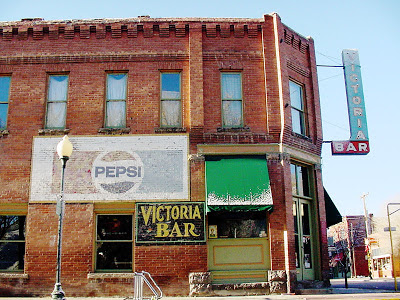I went for a run in Breckenridge, Colorado, this morning. Elevation 9,600 feet above sea level. I was quickly reminded how much difference a few thousand feet can make. Less than a block into the run I felt like I was gasping for air and had to slow down from my normal pace to catch my breath. I live at 6,400 ft. so am no stranger to altitude. But coming up to Breckenridge is still a 50% gain in elevation.
Thursday I went for a run in Dallas at a whooping 430 feet above sea level. I ran 3.1 miles at 8:28/mile. Today I ran 4.0 miles at 9:50/mile. I'd say my exertion level was about the same for both runs. There is little doubt that elevation affects performance.
When I rode my first
Ride the Rockies in 2005 I lived in Kansas City at about 1,100 ft. My biggest concern was how the elevation would affect me. I found out on Day 5 of the ride when I ended up in the ER with a sore throat and terrible headache. The people in the medical tent at the overnight stop in Leadville (elev. 10,200 ft.) sent me to the ER for a strep test.
When I arrived the doctor measured my blood oxygen level (pulse-ox) at 89 and quickly hookedd me up to oxygen. After a quick nap while waiting for my strep test to come back (it was negative), I felt much better! The doctor diagnosed me with altitude sickness, a serious, sometimes fatal, condition caused by the lack of oxygen in the air at high elevation. In my case the nap and oxygen did the trick. With my pulse-ox back up to 97 the doctor sent me on my way and I was able to finish the final day of the ride over
Fremont Pass to Breckenridge the next day.
So the questions remains, how can you train to ride at elevations above 10,000 ft. if you live below 1,000 (or even below 7,000)? Probably the most important advice I have is to just be in the best shape you can. Ride lots of miles. Find the steepest, longest hills near your house and ride them often. But then, when you arrive in Colorado, make sure you stay hydrated. Being properly hydrated helps your body deliver oxygen to your vital organs and muscles when every breath counts!
 |
This picture of my was snapped
at the Victoria Tavern on my first
RTR in 2005 (yes, that is a wig).
I look forward to a return trip on
this year's RTR! |
When I look back on my first ride and what I learned from the experience, I recall the night before the ride to Leadville was the party the night before in Salida. Salida is an eclectic mountain town and the setting of the ride party that night was Riverside Park, a gorgeous setting along the Arkansas River. After dark the party migrated across the street to the historic
Victoria Hotel and Tavern (aka The Vic).
Needless to say, I stayed until they kicked us out (I have a bad habit of not wanting to leave the party early). After walking back to the campground (the football field at Salida High School) I found my way to my tent and settled in to my sleeping bag. At that point I realized I had not filled my water bottles and both were dry. Making a call I would regret the next day I decided not to set out to find water in the middle of the night.
I woke the next morning severely dehydrated and no amount of water or Gatorade seemed to quench my thirst on the 60 mile, all uphill, ride to Leadville. They say once you feel thirsty it is too late to start hydrating. At least in my case, they were right. But I learned my lesson that first year and have made a conscious attempt to stay hydrated on my six RTRs since. My rule of thumb is to drink one water for every beer. I don't always stick to that, but I try. And I have avoided a return trip to the ER with altitude sickness.
I was reminded of this lesson this morning on my run, and have been pounding water ever since. Even though I don't have anywhere to ride tomorrow I don't want to end up with a headache on the drive home tomorrow (after a night out in Breckenridge tonight!).
Ride on!
Daren











